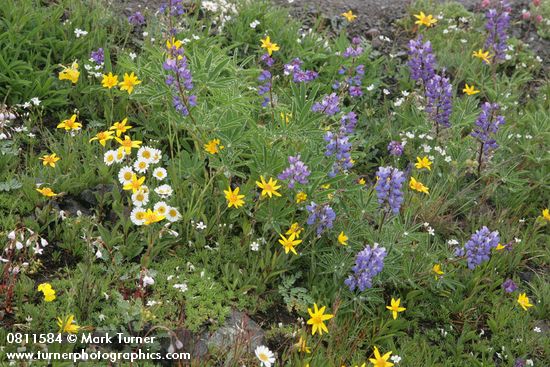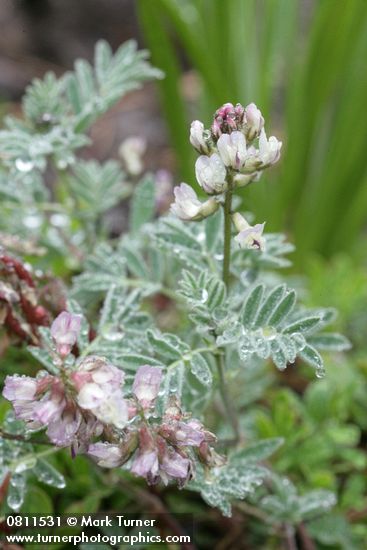Rainy Summer

I used to joke with friends from the dry side of the mountains that it stops raining on July 7 and stays dry through most of September in Bellingham, the North Cascades, and the Olympics. Well, not this year. It’s been one of the coolest and wettest summers I can remember. The photo was made near the summit of Mount Townsend in the Buckhorn Wildnerness of Olympic National Forest in late July. It was pouring rain mid-day, and continued for most of the afternoon. And this is on the dry side of the Olympics.
 Those of us who live on the wet west side of the Cascades learned quickly that if we stay home because it’s raining we’ll never get out and do anything. That doesn’t mean it’s more fun to go out in the rain, just that it’s a fact of life. The hike to Mount Townsend was a Botany Washington field trip to see the diverse alpine flora, including the rare and endemic Olympic Milkvetch (Astragalus cottonii). We found it before the rain started, but glistening with dew drops from the cloud that enveloped us. This was the first time I’d seen this species in bloom, although I’d seen its very showy inflated seedpods a few years ago on another Olympic hike.
Those of us who live on the wet west side of the Cascades learned quickly that if we stay home because it’s raining we’ll never get out and do anything. That doesn’t mean it’s more fun to go out in the rain, just that it’s a fact of life. The hike to Mount Townsend was a Botany Washington field trip to see the diverse alpine flora, including the rare and endemic Olympic Milkvetch (Astragalus cottonii). We found it before the rain started, but glistening with dew drops from the cloud that enveloped us. This was the first time I’d seen this species in bloom, although I’d seen its very showy inflated seedpods a few years ago on another Olympic hike.
While rainy days are challenging for photography in some ways, the soft light really opens up the shadows and makes it possible to capture every detail. Colors are rich and saturated and everything glistens with the raindrops. It helps when the rain comes down very softly and without any wind.
I use a cheap plastic camera cover when working in the rain. It cinches down around the lens hood and has a small hole to go around the viewfinder. While it doesn’t keep the camera completely dry it helps a lot. I have to remember to check the lens frequently for water droplets, which create big soft spots. That can be a nice effect if it’s deliberate, but more often I just miss seeing them through the viewfinder and find out later that I had a problem.
When we got off the trail I set all my gear out to dry overnight, spreading it around my host’s living room. Come morning there was still a lot of dampness, but the sun had returned. I headed back up to the mountains and started shooting again. Soon I thought everything looked fuzzy. I checked the lens and discovered that there was condensation inside. I switched lenses and set the damp one in the sun to dry out, which it did in fairly short order. I’d had that happen before and have never noticed any long-term problems.

